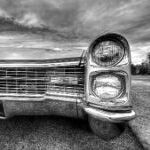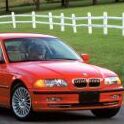Mazda is the latest automaker to announced plans for electrify its entire lineup and it will involve the return of the rotary engine.
By 2030, five percent of Mazda vehicles will be pure electric and range extender models. The rest will have combustion engines with some sort of electrification.
"We've seen drastic changes in automotive-related environmental policies all over the world. We at Mazda are keeping an eye on what is going on in the industry as we move forward with our strategy," said Mazda CEO Akira Marumoto.
The push begins in 2019 with a mild-hybrid model, followed by a electric vehicle that is being developed in-house according to Automotive News. A plug-in hybrid will debut in 2021.
But what about the rotary engine? This will be the range-extender for an electric vehicle that will recharge the battery and provide a longer cruising range. Mazda says the rotary is the perfect engine for this application as it is compact, powerful, and quiet. One interesting tidbit - Mazda says the rotary will be able to burn liquefied petroleum gas (LPG).
Source: Automotive News (Subscription Required), Mazda
MAZDA ANNOUNCES ELECTRIFICATION AND CONNECTIVITY STRATEGIES FOR CARS THAT INVIGORATE MIND AND BODY
- CONTINUES TAKING A HUMAN-CENTERED APPROACH TO THE JOY OF DRIVING; CONTRIBUTING TO THE EARTH, SOCIETY AND PEOPLE
October 2, 2018; HIROSHIMA, Japan – Mazda Motor Corporation today announced electrification and connectivity strategies that build on the company’s human-centered development philosophy, aiming to further advance the joy of driving, provide both drivers and passengers with peace of mind through an enhanced sense of connection with the car in everyday driving situations, and offer an emotionally enriching joy of life through car ownership. The strategies are based on Mazda’s long-term vision for technology development, “Sustainable Zoom-Zoom 2030,” which makes it the company’s mission to preserve the beauty of the earth and enrich society and individual lives and seek solutions in the areas of people, society and the earth.
The electrification and connectivity technologies outlined below will further enhance the inherent value of the automobile.
ELECTRIFICATION TECHNOLOGIES
Mazda will strive to reduce carbon dioxide emissions and enhance the joy of driving by deploying compact, lightweight electrification technologies while further refining the internal combustion engine, which is forecast to be equipped in the majority of new cars for many years to come. The company will introduce electric vehicles as the optimal solution in regions that generate a high ratio of electricity from clean energy sources or restrict certain vehicle types to reduce air pollution.
- With a view to achieving a 90-percent reduction versus 2010 levels in its corporate average “well-to-wheel” carbon dioxide emissions by 2050, Mazda will deploy some form of electrification in all production vehicles by 2030.
- By 2030, Mazda expects that internal combustion engines combined with some form of electrification will account for 95 percent of the vehicles it produces and battery electric vehicles will account for 5 percent.
- In-house development of electric vehicles will leverage the advantages of electric drive systems and be guided by Mazda’s unique human-centered development philosophy that focuses on human traits and sensibilities.
- Mazda will develop two battery electric vehicles, one powered solely by battery and another that pairs a battery with a newly developed range extender powered by Mazda’s small, lightweight and exceptionally quiet rotary engine. The range extender will recharge the battery when necessary to effectively increase the vehicle’s driving range.
- The concept behind the rotary-powered range extender was to leverage the rotary engine’s small size and high power output to make multiple electrification technology solutions possible via a shared packaging layout.
- Taking advantage of the rotary engine’s compatibility with gaseous fuels, the rotary-powered range extender is designed to also burn liquefied petroleum gas and provide a source of electricity in emergencies.
CONNECTIVITY TECHNOLOGIES
In line with its human-centered development philosophy, Mazda will develop connectivity technologies that offer an enriching experience of the joy of life, connecting people by facilitating the sharing of experiences and feelings through cars. By offering this new value together with the joy of driving, Mazda aims to inspire people and enrich society.
- Contribute to the resolution of social issues, such as the weakening of interpersonal connections that has accompanied changes in society, by connecting people and society through connectivity technologies.
- Link connectivity with model-based development and reflect the results in future product development, improving quality and customer satisfaction.
- Leverage the alliance with Toyota Motor Corporation in the development of connectivity technologies.
“They say that the automotive industry is undergoing a once-in-a-century transformation. At Mazda, we see this as an opportunity to create a new car culture,” said Akira Marumoto, Mazda’s Representative Director, President and CEO. “New trends and technologies in connectivity, autonomy, sharing and electrification offer new possibilities for creating ever more attractive cars. Using new technologies based on our unique human-centered development philosophy, Mazda will, in the spirit of ‘Never Stop Challenging,’ continue to pursue the joy of driving and work to create an emotional connection with customers that rivals the strongest brands in the world.”







-3707742431.jpg.06edf8e14f4ccf35c60d4774a543cc11.jpg)


Recommended Comments
There are no comments to display.
Join the conversation
You can post now and register later. If you have an account, sign in now to post with your account.
Note: Your post will require moderator approval before it will be visible.